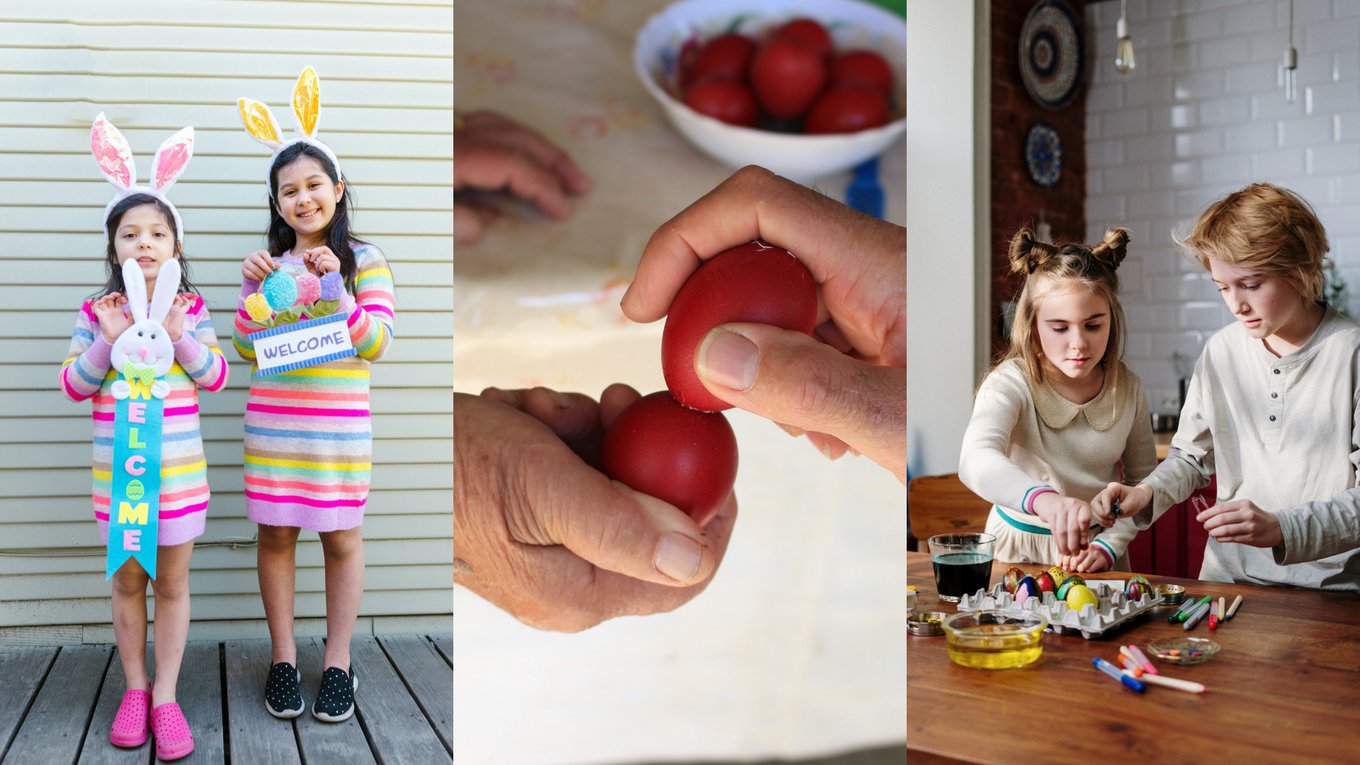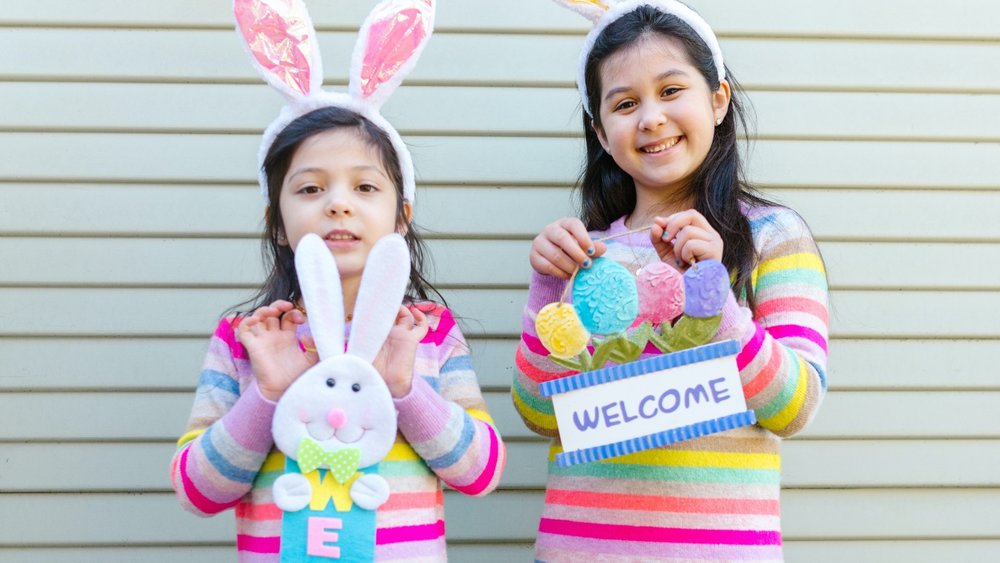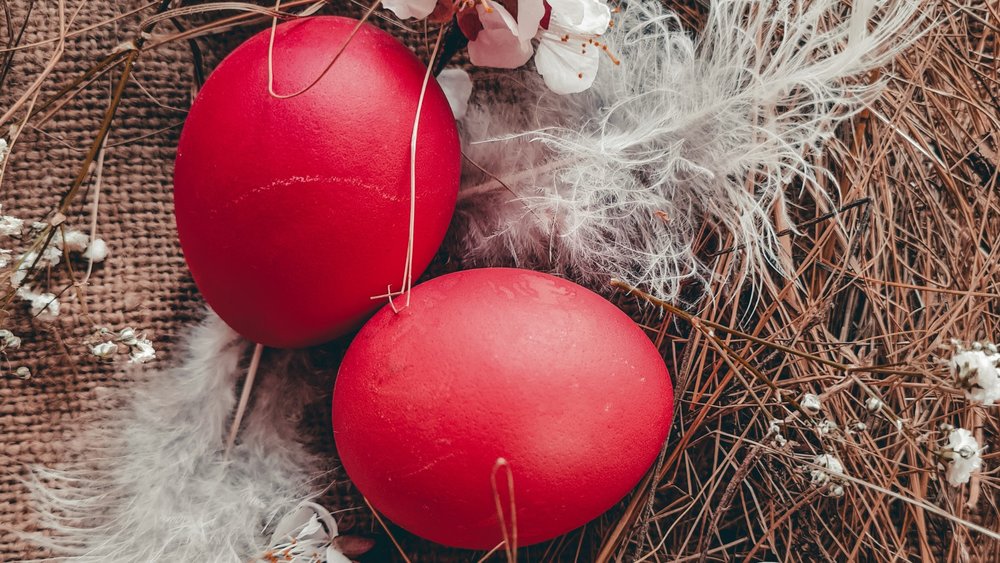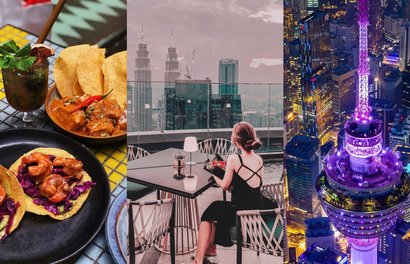What better way to learn about the Easter holidays than learning about how Easter eggs are celebrated around the world?
Traditions and customs associated with the holiday can vary greatly depending on the country and culture. From colorful processions and feasts to egg hunts and parades, Easter is a time for joyous celebration and reflection for everyone!
Some quick fun facts about Easter
Quickly learn about the holiday with these fun facts!
- The name "Easter" comes from the Old English word "Ēastre," which is believed to have been the name of a pagan goddess of spring.
- The biggest decorated Easter egg is 16.72 m (54 ft 10.3 in) tall in Pomerode, Santa Catarina, Brazil. The colossal egg was produced for the yearly Easter festival in Pomerode. What a way to celebrate Easter eggs!
- Halloween in April? Yes, please! In Finland and Sweden, children dress up as witches on Easter and go door-to-door asking for candy and coins.
How long are the Easter holidays?
The length of the Easter holidays can vary depending on the country and culture. In many countries, such as the US, Canada, and Australia, Easter is typically celebrated on a Sunday, which is then followed by Easter Monday, a public holiday.
In some countries, such as the UK, the Easter holidays can last up to two weeks, with schools and some businesses closing for an extended period.
Other countries, particularly those with a strong Catholic population, may observe additional days of religious significance, such as Maundy Thursday and Good Friday, which can extend the Easter holiday period.
Easter eggs around the world
Everyone knows what an Easter egg is—it can be made of plastic, chocolate, or actual hard-boiled eggs that are used to celebrate the holiday. Each country has its tradition with these eggs, and here’s a list of some interesting ones you might want to try out this year!
1. Pysanka Eggs in Ukraine
Pysanka eggs are intricately decorated Ukrainian Easter eggs made using a wax-resist method. The designs are created by drawing on the egg using melted beeswax, which is then covered in dye. After the dye has dried, the wax is removed to reveal a colorful design!
2. Red Eggs in Greece
In Greece, they traditionally dye hard-boiled eggs bright red for Easter. The eggs are then cracked against each other to symbolize the resurrection of Christ. In preparation for Easter Sunday, these are usually dyed on Holy Thursday. These eggs won’t be hard to miss during your Easter egg hunt!
3. Egg Tapping in Germany
Looking for a fun way to use your hard-boiled eggs? Egg tapping, or "Eierpecken," is a popular Easter game in Germany, which involves tapping two eggs against each other. The goal is to crack your opponent's egg without cracking your own. Of course, the winner is the person whose egg remains intact!
4. Fabergé Eggs in Russia
Fabergé eggs are intricately designed and decorated Easter eggs that were first created in Russia in the late 19th century. These eggs were made for the Russian royal family and other wealthy clients, and are now considered works of art. Each egg is made from precious materials such as gold, silver, and jewels and features a surprise inside!
5. Kraslice Eggs in the Czech Republic
In the Czech Republic, Kraslice eggs are traditional Easter eggs that are decorated using a variety of techniques, including wax-resist dyeing, etching, and painting. These designs often feature intricate patterns and symbols representing fertility, love, and new beginnings. These eggs are given as gifts to friends and family members, and are also used to decorate Easter baskets—what a fun gift to receive!
Do any of these traditions catch your attention? Try some out for yourself this Easter!











![[Updated] Complete List Of Official Nationwide MCO SOP 2021](https://res.klook.com/image/upload/fl_lossy.progressive,q_85/c_fill,w_160,h_104/v1633858858/blog/iso56uzsphmdguixkvzh.jpg)





![[Updated] Complete List Of Official Nationwide MCO SOP 2021](https://res.klook.com/image/upload/fl_lossy.progressive,q_85/c_fill,w_410,h_264/v1633858858/blog/iso56uzsphmdguixkvzh.jpg)








